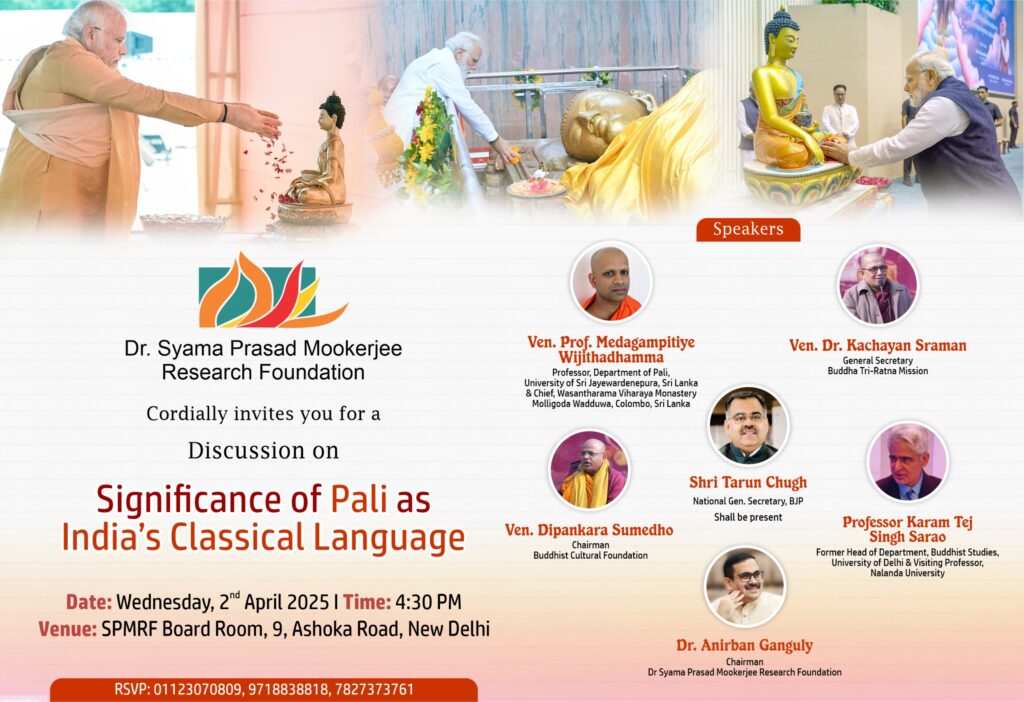Philip Christopher
Protectionist global trends, particularly in developed economies are increasingly viewed as populist measures to create jobs for locals haveadversely affected employment prospects of skilled workers from developing countries. Temporary suspension of the premium processing for the H-1B visa by the United States Citizenship and Immigration Services since March 2018 or the UK setting higher salary threshold for anyone applying under the Tier 2 intra-company transfer (ICT) category are instance of as protectionist measures to increase local employment.
Governments the world overtake efforts to create jobs for their citizens. Inclusive growth is identified by the Modi government as a strategy to sustain overall economic growth while at the same time creating much needed employment for India’s youthful population.A GDP of 8.2% was reported for the first quarter (April – June) of fiscal year 2018-19. The government has ensured India is the fastest growing economy in the world. Initiatives like Make In India, Startup India, Mudra Yojana, etc can be attributed to the 13.5% growth in the manufacturing sector during the same period. Even the Reserve Bank of India (RBI) has taken cognizance of the increased industrial activity and projected a 7.4% growth rate for the fiscal year 2018-19.SC Garg, Economic Affairs Secretary said “Economic performance is back to very normal. We had over 8% of quarterly growth last time in first quarter of 2016-17. Now after 8 quarters, we are at 8.2%. From 8.1% we have come to 8.2% which signals economic growth now on steady high growth path.” Clearly under the astute governance of current dispensation, the Indian economy has outperformed most forecasts surging at a two year high. The unique characteristics of this economic growth are job creation and inclusiveness of the growth the very premise of the economic development policy of the BJP – SabkaSaath, SabkaVikas.
The inclusiveness of the economic growth is clearly visible in the impetus economic development programs like Startup India, Make In India, Stand Up India or MUDRA generates. The direct beneficiaries of these schemes are entrepreneurs who manage over 36 million MSMEs in India. CII considers the Indian MSME sector as the backbone of the national economic structure and the bulwark for the Indian economy. MSMEs contribute around 6.11% of the manufacturing GDP, 24.63% of the GDP from service activities and represent 33.4% of India’s manufacturing output. The total employment in the MSME sector was 805.24 lakh. The sector is growring at 10% and about 20% of the MSMEs are based out of rural areas. The MSME employ is significant rural workforce and promotes sustainable development and inclusive growth. MSME generate large scale employment particularly rural area and are responsible for more than half of formal employment opportunities.
Despite being an important pillar of the Indian economy, MSMEs faced many challenges including startup procedures, accessing electricity, land, finance and skilled labour. Access to finance is the single biggest problem ever so often impeding productivity and growth. India’s informal sector that is labour intensive is completely driven by MSMEs where 85% of the jobs are created. MSMEs are widely considered to be providers of a higher share of total jobs created. The MSME sector employs 40% of India’s workforce. Considering that 50% of the Indian workforce is engaged in agriculture MSMEs contribution to employment is exceptionally significant.
MSMEs directly benefit from the PradhanMantri MUDRA Yojana (PMMY) as a result of this intervention 5.5 crore jobs have been created. The government continues to take reformative steps to spur growth in the MSME sector as the Prime Minister himself considers this to be crucial for India’s economic transformation. In 2018, annual budgetary allocations to MUDRA was increased by 20% from the previous year resulting in Rs. 3 lakh crore assigned for MSME sector development. Of the 12 crore MUDRA beneficiaries 55% belong to SCs, STs, OBCs and women. This government has ensured inclusive growth by focusing on the MSME sector promoted by women and entrepreneurs from weak socio-economic backgrounds.
The impact on increased investment resulting in job creation in the Indian economy is well researched and long since established. In addition to conventional source of capital including FDI, term loans, and private investments a program such a MUDRA promotes an ecosystem that nurtures entrepreneurs should be a national priority to not only develop the overall economy but foster inclusive growth in labour intensive markets. The policies of the government are well aligned to such national priorities. MUDRA reaches the broadest possible section of the Indian population and therefore promotes inclusive employment that is sustainable in the long-term.
Deployment of Bank Credit
| Sl.No. |
Sector |
Outstanding as on Rs.in Crore | |||||||||
| Mar.27, 2009 | Mar.26, 2010 | Mar.26, 2010 | Mar 25, 2011 | Mar 23, 2012 | Mar.21, 2014 | Mar.20, 2015 | Mar.18, 2016 | Mar.31, 2017 | March 30, 2018 | ||
| Industry (Micro & Small, Medium and Large ) | 1054390 | 1311451 | 13115 | 16208 | 19659 | 25165 | 26576 | 27307 | 26798 | 26993 | |
| 1 | Micro & Small | 168997 | 206401 | 2064 | 2291 | 2592 | 3482 | 3800 | 3715 | 3697 | 3730 |
| 2 | Medium | 122155 | 132636 | 1326 | 1846 | 2056 | 1241 | 1245 | 1148 | 1048 | 1037 |
| 3 | Large | 763238 | 972415 | 9724 | 12071 | 15010 | 20442 | 21531 | 22444 | 22053 | 22226 |
Sector-wise FDI Inflows :
| US$ million | ||||||||
| Source | 2009-10 | 2010-11 | 2011-12 | 2012-13 | 2013-14 | 2014-15 | 2015-16 | 2016-17 P |
| Manufacturing | 5,143 | 4,793 | 9,337 | 6,528 | 6,381 | 9,613 | 8,439 | 11,972 |
| Communication Services | 1,852 | 1,228 | 1,458 | 92 | 1,256 | 1,075 | 2,638 | 5,876 |
| Financial Services | 2,206 | 1,353 | 2,603 | 2,760 | 1,026 | 3,075 | 3,547 | 3,732 |
| Retail & Wholesale Trade | 536 | 391 | 567 | 551 | 1,139 | 2,551 | 3,998 | 2,771 |
| Business Services | 1,554 | 569 | 1,590 | 643 | 521 | 680 | 3,031 | 2,684 |
| Computer Services | 866 | 843 | 736 | 247 | 934 | 2,154 | 4,319 | 1,937 |
| Miscellaneous Services | 888 | 509 | 801 | 552 | 941 | 586 | 1,022 | 1,816 |
| Electricity and other Energy Generation, Distribution & Transmission | 1,877 | 1,338 | 1,395 | 1,653 | 1,284 | 1,284 | 1,364 | 1,722 |
| Construction | 3,516 | 1,599 | 2,634 | 1,319 | 1,276 | 1,640 | 4,141 | 1,564 |
| Transport | 220 | 344 | 410 | 213 | 311 | 482 | 1,363 | 891 |
| Restaurants and Hotels | 671 | 218 | 870 | 3,129 | 361 | 686 | 889 | 430 |
| Education, Research & Development | 91 | 56 | 103 | 150 | 107 | 131 | 394 | 205 |
| Mining | 268 | 592 | 204 | 69 | 24 | 129 | 596 | 141 |
| Real Estate Activities | 2,191 | 444 | 340 | 197 | 201 | 202 | 112 | 105 |
| Trading | 198 | 156 | 6 | 140 | 0 | 228 | 0 | 0 |
| Others | 384 | 506 | 419 | 43 | 292 | 232 | 215 | 470 |
| P: Provisional. | ||||||||
| Source: RBI | Note: Includes FDI through SIA/FIPB and RBI routes only. | ||||||||
According to Asian Journal of Economics and Empirical Research (Vol. 3, No. 1, 40-48, 2016), “India certainly can be considered as an emerging economic power and FDI has contributed to its growth in amultidimensional way, but as far as the employment generation is considered there is yet to be methodology developed to establish a concrete relation between the two.”As co-relation coefficient was too a meaningful inference could not be drawn. But as far as the relation between GDP growth and employment generation is concerned, a positive relation with decreasing rate of growth of labor employment, capital intensive technology is now taking up the major role as growth engine in India and a further reduction in elasticity of employment. Therefore, it becomes all the more imperative for a funding avenue like MUDRA be developed into a flagship funding program for the MSME sector. (To be continued)
(The author is Founder and CEO, Policy Matters Institute (a New Delhi based Economic and Public Policy Advisory Organization).
(The views expressed are the author's own and do not necessarily reflect the position of the organisation)


